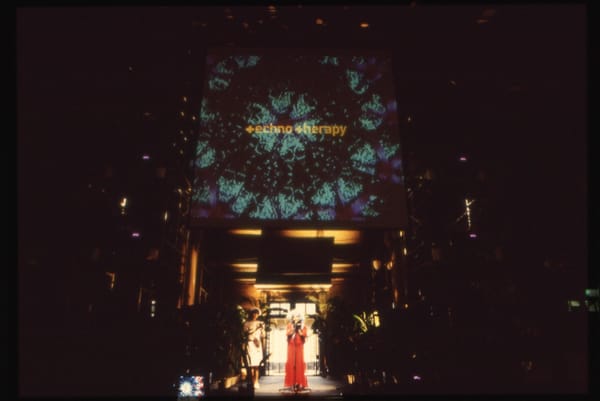Ideas
Sonic Territories: Performance Recap

“Sonic Territories” was an eclectic mix of performances, transformed into the near-sublime by virtue of the uniquely powerful location in which the events unfolded.
The site in question, the Beishan Broadcast Wall, on Taiwan’s Kinmen Island, is a ten-meter-high brutalist box that houses 48 speakers. Constructed in 1967, it was used by Taiwanese authorities to blare anti-Communist propaganda, directed at mainland China, until the late 1970s. The speaker system hurled news, songs and spoken messages as far as 25 kilometers into mainland Chinese territory. In return, the Communists pumped back shells packed with propaganda leaflets, firing a total of 500,000 shells over 20 years.
Further complicating the history of the site is the fact that the concrete wall sits just over a kilometer up the coastline from Guningtou, on the northeast tip of Kinmen Island, which bore witness to a bloody conflict in 1949 that remains the only instance where troops from both sides of the Chinese Civil War lost their lives on the soil of the Republic of China (ROC). Even now, the beach is littered with anti-amphibious assault palisades, jutting out of the sand like mute artillery pieces angled towards the Chinese coast.

For “Sonic Territories,” five artists took over the still partially functioning Beishan Broadcast Wall. Comprising deeply site-specific performances, curator Ada Kai-Ting Yang’s ensemble rippled with resonances that spoke of peace while stirring at shared memories of displacement and conflict.

Berlin-based French artist Augustin Maurs’ segment reflected on the opposition between sound and silence in relation to trauma. His sound piece, played via the wall of speakers, comprised incantations of statements about that duality—sound and silence—including a translated, Mandarin version of a gut-wrenching speech made in opposition to gun violence by 16-year-old Emma Gonzalez in the wake of Florida’s Marjory Stoneman Douglas High School shooting earlier this year. In explaining his work, Maurs told ArtAsiaPacific: “It is about silence and the act of choosing when to speak, even when one does not necessarily wish to do so.” In this way, Maurs’ performance hinted at the bravery needed to articulate previously unvoiced topics, and prompted ruminations about how healing can be facilitated individually and collectively through speaking and listening.
Maurs’ work touched on the crux of the motivation behind “Sonic Territories.” The timing of the event could not have been more poignant. It coincided with the 60th anniversary of the 823 Artillery Bombardment—also known as the Second Taiwan Strait Crisis—that saw Mao Zedong’s Communist forces rain down more than 30,000 artillery shells on Kinmen in the first two hours of an assault that lasted 44 days and claimed several hundred lives. In a powerful trifecta, the weekend also marked Ghost Festival, in which the spirits of the deceased are believed to depart the ethereal realm to visit the world of the living. Yet Yang was keen to emphasize the apolitical nature of the works and the focus on harmony: “This is in no way a political statement,” she said. “The purpose is to show how what was once an instrument of war can be used instead to broadcast a message of peace and blessing.”
That emphasis on peace was symbolized by a choir clad in olive-green robes, who, facing China, performed campus folk songs. Campus folk is a uniquely Taiwanese musical movement that has its roots in the late 1970s and the swelling of nationalist Taiwanese sentiment that demanded the country produce its own songs, distinct from Western or Communist Chinese influence. Despite this context, the songs, many written by composers who had had no contact with China itself, evidenced a sense of connection with China as an integral part of Taiwan’s history and cultural identity.
This sense of interconnectedness—and with it the potential for mutual understanding, which forms the basis of any peacemaking process—may have also provided the impetus for the selection of Teresa Teng recordings as another element of the “Sonic Territories” broadcasts. A picture of Teng with the ROC troops that manned the speaker station while it was in active service still hangs within the Beishan Broadcast Wall structure itself. Her songs were one of the most popular sonic weapons used by Taiwan to convince the Communists to align themselves with the ideologies of the ROC. At “Sonic Territories,” however, the songs were not played to promote the freedom of thought, denied to those across the bay, but as testament to a shared culture. Specifically, Teng’s albums, performed in a variety of Chinese dialects, including Mandarin, Cantonese and Hokkien—the language of southeast China’s Fujian Province, which evolved into Taiwanese—highlighted the linguistic bond between Taiwan and China.
While there is little doubt as to Kinmen’s historical significance in Taiwan-China relations, and its potential as a bridge of peace, today, the reality of relations between Beijing and Taipei is alarmingly uncertain and the youth of Taiwan face an unsettled future. That vulnerability was personified by artist Hsia-Fei Chang, who sat with her legs tucked under her while she offered ukulele-backed ballads to the wind. Similarly, the state of uncertainty was captivatingly transmitted by sound-art pioneer Wang Fu-Jui during the finale of “Sonic Territories.” His work intricately interlaced groaning bass notes with piercing morse-code-infused electronica, which the artist said contained a message addressed to the youth of Kinmen—for them to keep going and never give up, irrespective of the difficulties they may face.
“Sonic Territories” is set to continue with performances in Busan and Berlin, the latter featuring recordings of Kinmen residents reflecting on their lives, intermingled with elements of the local soundscape.
For the artists, the hope is to return to the Beishan site and establish a research residency focused on further exploring how this testament to historical trauma can open new and more peaceful creative opportunities.







